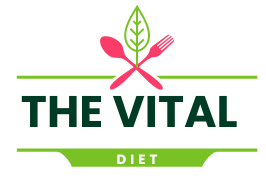
Eating well begins with excellent meal preparation. According to a 2019 survey, only 29% of Americans reported that they regularly plan their meals a week in advance1. Yet, meal planning can significantly influence our health, convenience and budget. A study in 2017 found that those who plan their meals in advance had improved diet quality, more variety in their food, and lower obesity rates2.
To help you streamline your meal prep process, we’ve curated four proven strategies. These methods will save you time, reduce food waste and ultimately lead to healthier eating habits.
1. Weekly Meal Planning
Weekly meal planning is a straightforward and effective way to organize your meals. You’ll need to dedicate an hour or two of your time at the beginning of the week to plan all your meals.
How to Start
Start by taking an inventory of what food you already have. Check your pantry, fridge, and freezer to see what you have in stock and what needs to be used up. You can then build your meals around these ingredients.
Where to Find Inspiration
If you’re stuck on what to cook, use your on-hand ingredients as a starting point. There are plenty of online platforms where you can search for recipes based on ingredients. If your pantry is bare, look at your local grocery store’s weekly ads to see what foods are on sale.
The Shopping List
Once you’ve decided on your meals for the week, make a comprehensive shopping list. When you go to the grocery store, stick to your list to avoid impulse purchases and ensure you have everything you need for the week.
2. Batch Cooking and Freezing
Batch cooking is another effective meal planning strategy. It involves cooking large quantities of food at one time and storing it for future meals.
The Process
The batch cooking process is similar to weekly meal planning. You’ll start by selecting your meals and shopping for ingredients. Then, you’ll spend a few hours cooking all the meals. This might seem like a lot of work initially, but it will save you time during the week when your meals are ready to go.
Freezer-Friendly Recipes
To make the most of batch cooking, choose recipes that freeze well. Soups, casseroles, and egg dishes are great options. Once you’ve cooked your meals, portion them out into freezer-safe containers. Then, all you need to do is reheat your meals when you’re ready to eat.
3. Using Meal Planning Apps
Meal planning apps can be a great tool to help you organize your meals if you’re new to meal planning. For a small monthly fee, these apps offer a variety of features to streamline your meal planning process.
Features of Meal Planning Apps
Meal planning apps like Cozi and Yummly allow you to store recipes, create shopping lists, and organize your meals on a digital calendar. Some apps like PlateJoy even offer optional grocery delivery.
4. Theme Nights and Rotating Menus
Theme nights and rotating menus are another fun and easy way to plan your meals. By designating a theme for each day of the week, you’ll always have a starting point for your meals.
How to Create Theme Nights
Theme nights can be anything you want. You might choose to have “Meatless Monday” or “Taco Tuesday.” The possibilities are endless. Just remember to keep your themes broad enough to allow for variety in your meals.
The Rotating Menu
A rotating menu involves creating a pool of recipes for a month’s worth of meals. Each week, you’ll choose meals from this pool. This strategy can help reduce decision fatigue while ensuring you have a varied diet.
Making Meal Planning Work for You
Everyone’s meal planning strategy will be different. What works for one person might not work for another. The key is to remain flexible and willing to adapt your plan to your circumstances and preferences. The more consistent you are with your meal planning, the more it will become a habit, and the more you’ll reap the benefits.
Image Source: Unsplash
Eating well begins with excellent meal preparation. According to a 2019 survey, only 29% of Americans reported that they regularly plan their meals a week in advance1. Yet, meal planning can significantly influence our health, convenience and budget. A study in 2017 found that those who plan their meals in advance had improved diet quality, more variety in their food, and lower obesity rates2.
To help you streamline your meal prep process, we’ve curated four proven strategies. These methods will save you time, reduce food waste and ultimately lead to healthier eating habits.
1. Weekly Meal Planning
Weekly meal planning is a straightforward and effective way to organize your meals. You’ll need to dedicate an hour or two of your time at the beginning of the week to plan all your meals.
How to Start
Start by taking an inventory of what food you already have. Check your pantry, fridge, and freezer to see what you have in stock and what needs to be used up. You can then build your meals around these ingredients.
Where to Find Inspiration
If you’re stuck on what to cook, use your on-hand ingredients as a starting point. There are plenty of online platforms where you can search for recipes based on ingredients. If your pantry is bare, look at your local grocery store’s weekly ads to see what foods are on sale.
The Shopping List
Once you’ve decided on your meals for the week, make a comprehensive shopping list. When you go to the grocery store, stick to your list to avoid impulse purchases and ensure you have everything you need for the week.
2. Batch Cooking and Freezing
Batch cooking is another effective meal planning strategy. It involves cooking large quantities of food at one time and storing it for future meals.
The Process
The batch cooking process is similar to weekly meal planning. You’ll start by selecting your meals and shopping for ingredients. Then, you’ll spend a few hours cooking all the meals. This might seem like a lot of work initially, but it will save you time during the week when your meals are ready to go.
Freezer-Friendly Recipes
To make the most of batch cooking, choose recipes that freeze well. Soups, casseroles, and egg dishes are great options. Once you’ve cooked your meals, portion them out into freezer-safe containers. Then, all you need to do is reheat your meals when you’re ready to eat.
3. Using Meal Planning Apps
Meal planning apps can be a great tool to help you organize your meals if you’re new to meal planning. For a small monthly fee, these apps offer a variety of features to streamline your meal planning process.
Features of Meal Planning Apps
Meal planning apps like Cozi and Yummly allow you to store recipes, create shopping lists, and organize your meals on a digital calendar. Some apps like PlateJoy even offer optional grocery delivery.
4. Theme Nights and Rotating Menus
Theme nights and rotating menus are another fun and easy way to plan your meals. By designating a theme for each day of the week, you’ll always have a starting point for your meals.
How to Create Theme Nights
Theme nights can be anything you want. You might choose to have “Meatless Monday” or “Taco Tuesday.” The possibilities are endless. Just remember to keep your themes broad enough to allow for variety in your meals.
The Rotating Menu
A rotating menu involves creating a pool of recipes for a month’s worth of meals. Each week, you’ll choose meals from this pool. This strategy can help reduce decision fatigue while ensuring you have a varied diet.
Making Meal Planning Work for You
Everyone’s meal planning strategy will be different. What works for one person might not work for another. The key is to remain flexible and willing to adapt your plan to your circumstances and preferences. The more consistent you are with your meal planning, the more it will become a habit, and the more you’ll reap the benefits.





